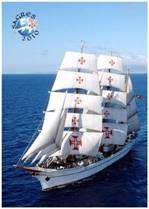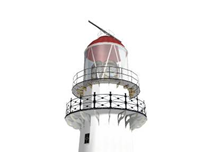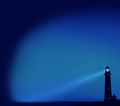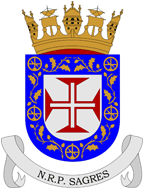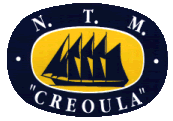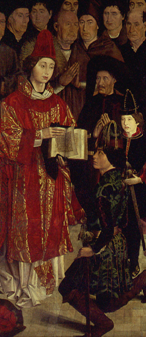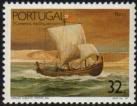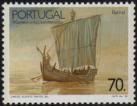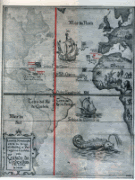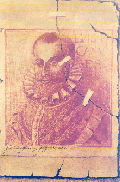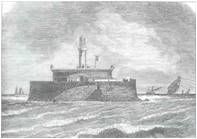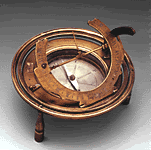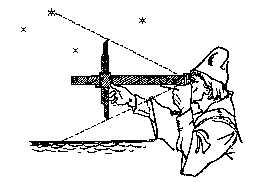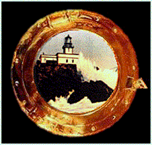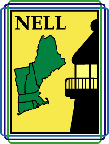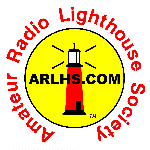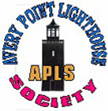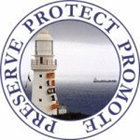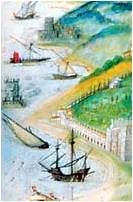 Great Captain Island is, at seventeen acres, the largest of a three-island group located about a mile offshore from Greenwich, Connecticut. The other two islands are Little Captain (more commonly known today as Island Beach) and Wee Captain, which is attached to Great Captain by a sandbar. According to local legend, the names of the islands are connected with a treasure of gold and silver buried there by the famous pirate Captain Kidd, but more reliable historical accounts say the islands are named after Captain Daniel Patrick, an early 17th-century settler in Greenwich and the town’s first military commander.
Great Captain Island is, at seventeen acres, the largest of a three-island group located about a mile offshore from Greenwich, Connecticut. The other two islands are Little Captain (more commonly known today as Island Beach) and Wee Captain, which is attached to Great Captain by a sandbar. According to local legend, the names of the islands are connected with a treasure of gold and silver buried there by the famous pirate Captain Kidd, but more reliable historical accounts say the islands are named after Captain Daniel Patrick, an early 17th-century settler in Greenwich and the town’s first military commander.
King George III of England originally granted the islands to one John Anderson in 1763, but when Anderson felled some trees on the island, the Bush family of Greenwich, who felt they owned the islands, sued him for trespassing. A court in Connecticut not surprisingly ruled in favor of its citizens, the Bushes. In turn, the New York Legislature declared in 1788 that the island was part of the New York town of Rye. Over a century later, the long simmering dispute was finally settled for good, when a commission gave Connecticut permanent jurisdiction over the islands.
Great Captain Island is located near the main shipping lanes of Long Island Sound amidst a number of small islands, ledges, shoals, and other maritime hazards, making it an ideal spot for a lighthouse. In 1829, Congress allocated $5,000 for that purpose, and three and a half acres on the southeast part of Great Captain were sold to the federal government. (Both Connecticut and New York had to release the land to the government, since at that time they both still claimed ownership of the islands.)
The first Great Captain Island Lighthouse, a 30-foot tower built of rough stone, was described by Lt. Bache as “badly constructed.” The mortar had not hardened properly and the walls were cracked in a number of places. The five-room keeper’s quarters, a stone structure separate from the lighthouse tower, was apparently in better shape. The original beacon consisted of ten lamps with parabolic reflectors and showed light in every direction. In 1858, this lighting apparatus was replaced with a fourth-order Fresnel lens showing a fixed white light.
There was continued grumbling about the sorry state of the tower, both inside and out, and the reliability of its equipment. Finally, Congress allocated $12,000 in 1867 to build a replacement lighthouse on the site. A design shared by other lighthouses in the area was chosen: a stone keeper’s dwelling with a cast-iron light tower on top of one end of the gabled roof. (The other lighthouses with this same design are Sheffield Island and Morgan Point in Connecticut; Old Field Point and Plum Island in New York; and Block Island North in Rhode Island.)
A steam-driven fog whistle was added in a separate new structure in 1890. In 1905 a duplicate foghorn powered by 13-horsepower oil engines went into service. Almost immediately, local residents complained of not being able to sleep at night due to the noise. Soon after, adjustments were made to the fog signal by dampening and/or readjusting its position, and the citizens of Greenwich once again slept soundly at night.
During the Prohibition Era, lighthouse keepers in the Northeast often came under suspicion for aiding bootleggers. The remote location of many lighthouses, often on lonely and sparsely inhabited islands, made them ideal places to transfer shipments of illegal booze between ships for redistribution purposes. In 1925 the Coast Guard, acting on a tip, came to Great Captain Island to investigate reports of suspicious bootlegging activity. Seventy-five empty whiskey cases were found, too far inland for them to have simply washed ashore. Even though the keeper at Great Captain Island Lighthouse had several times before notified the Coast Guard of illegal liquor-related activities in the area, he nevertheless was held and questioned as a possible accomplice. He was eventually cleared of any wrongdoing and continued to mind the light.
During the mid-20th century a number of schemes for private development of Great Captain Island were proposed, including an exclusive country club, a casino, and a vacation spot for employees of a local company. In 1966, the town of Greenwich purchased all of Great Captain Island, except for the lighthouse grounds, from Aerotech Corporation for $90,000. The remaining three and one-half acres containing the tower and keeper’s quarters was obtained from the U.S. government in 1973.
Caretakers resided in the lighthouse until 2003, when the structure was deemed too dilapidated to live in. The Greenwich Chamber of Commerce and Indian Harbor Yacht Club launched a campaign called "Return the Light" to restore the lighthouse in the late 1990s. Ben Fisher, who helped champion the cause, was killed in the attack on the World Trade Center Towers in 2001, and a good share of the $305,000 in private donations toward the project were made in Fisher's name. The town of Greenwich also committed significant funds to the project, and in May of 2008, a $1.13 million contract was awarded to Trumbull-based Tomlinson Hawley Patterson to restore the lighthouse. As part of the renovation, a bronze plaque with local victims' names will be placed on a boulder near the lighthouse. Twelve residents and fourteen others with ties to Greenwich died in the attacks. Most were employed at the World Trade Center; two were aboard the hijacked planes.
As restoration work neared completion, Mike Nickerson and his family were allowed to move into a two-bedroom apartment on the ground floor of the lighthouse in May of 2009. At that time, Nickerson had been caretaker of the island for six years, and had previously been living in a small cottage on the island.
The island today remains in a largely natural state. Egrets, herons, osprey, and a number of other bird species can be seen nesting or stopping off during their annual migrations. A trail system has been laid out for visitors, and the western part of the island features picnic tables, grills, restrooms, and posted swimming areas. Great Captain’s Island is open year round, with a ferry to the island running during the summer months. The ferry was limited to Greenwich residents and their guests for years but is now available to the general public.
Photo Text & Copyright www.Lighthousefriends.com
 Built in 1802, Faulkner’s Island Lighthouse has been called the Eiffel Tower of Long Island Sound. The island on which the lighthouse stands has also had other titles over the years including Falkner Island, Falcon Island and Fortune Island. The crescent-shaped island is located about three and a half miles offshore of Guilford, Connecticut and had a number of owners in its pre-lighthouse days. Andrew Leete, son of a Connecticut governor, owned it for a while during the 1600s. In 1715 brothers Caleb and Ebenezer Stone bought it, and the island property remained in the Stone family for over a century.
Built in 1802, Faulkner’s Island Lighthouse has been called the Eiffel Tower of Long Island Sound. The island on which the lighthouse stands has also had other titles over the years including Falkner Island, Falcon Island and Fortune Island. The crescent-shaped island is located about three and a half miles offshore of Guilford, Connecticut and had a number of owners in its pre-lighthouse days. Andrew Leete, son of a Connecticut governor, owned it for a while during the 1600s. In 1715 brothers Caleb and Ebenezer Stone bought it, and the island property remained in the Stone family for over a century.
Ship traffic in the Sound increased steadily during the 18th century and many ships ran aground on the reefs surrounding the small, three-acre island. In 1802, a forty-foot octagonal tower was erected, using cut sandstone laid in lime mortar. A spiral wooden staircase led up to the lantern room. In early years, the station had twelve lamps and reflectors showing a fixed light, arranged on two separate tables, one above the other. In 1856, a fourth-order Fresnel lens was installed that varied its fixed light with a flash every two seconds.
The original keeper’s dwelling had eight rooms, but over the years it deteriorated so badly that a new one was constructed in 1858. The new structure was one and a half stories high, and featured three bedrooms, a dining room, sitting room, and attached kitchen. This structure was so poorly built, however, that during the winter large quantities of snow entered through gaps in the walls and roof. In 1871 it was rebuilt yet again, and at the same time an iron spiral staircase replaced the wooden one in the tower.
Faulkner’s Island light has had a number of interesting keepers over the centuries. In 1818, President James Monroe appointed Eli Kimberley, a Guilford native, keeper of the lighthouse. Kimberley relocated to the island with his pregnant wife Polly and two young children. During their thirty-three years on the island, the Kimberleys had another nine children.
Although the island was lonely and remote during the winter, there could be hundreds of visitors in the summer, and the Kimberleys were known as excellent hosts. The keeper even built a bowling alley (!) with a well-stocked bar. Unfortunately, on the Fourth of July in 1829, a group of twenty young men from New Haven drank themselves senseless at the bar, then tore up the Kimberleys’ vegetable garden, smashed some lighthouse equipment, and destroyed the keeper’s boat. Soon after, a law was passed prohibiting the sale of liquor at American light stations.
Another unique character was Oliver Brooks, who was keeper from 1851 to 1882. Brooks played the violin to pass the time at the lonely station, and also practiced his taxidermy skills on birds that suffered fatal crashes into the lantern windows. Eventually, the keeper’s house filled with stuffed birds and was a natural history museum of sorts. Brooks received some notoriety in November of 1858 when, during a winter storm, he managed to rescue five people from a ship grounded on the rocks near the lighthouse. Brooks was given a medal for his heroism, as well as a salary raise to $500 a year.
Throughout the 19th century, ships continued to be wrecked despite the presence of the lighthouse. Just between 1851 and 1882 over one hundred wrecks were recorded in the station’s logs. In 1976, despite there being two Coast Guardsmen on duty, a fire broke out in the keeper’s quarters and destroyed everything except the scorched tower and the fog signal building. After repairing the tower, the light was automated, and continues to flash a white light every ten seconds, although the fog signal has been discontinued. Due to the dedicated efforts of a volunteer preservation group called Faulkner’s Light Brigade, this site is one of Long Island Sound’s brightest lighthouse preservation stories.
Photo Text & Copyright www.Lighthousefriends.com
 There was no gathering storm in the October night air in 1871 as the steamer, Elm City, passed by the Stratford Point Lighthouse. No apparent reason why the light burned unusually dim, but even still, the captain was grateful for that small light warning of the shifting sand bars and strong currents formed where the Housatonic River meets Long Island Sound.
There was no gathering storm in the October night air in 1871 as the steamer, Elm City, passed by the Stratford Point Lighthouse. No apparent reason why the light burned unusually dim, but even still, the captain was grateful for that small light warning of the shifting sand bars and strong currents formed where the Housatonic River meets Long Island Sound.
It was many years later, when the Bridgeport Sunday Post interviewed the then grown granddaughter of the keeper, that the mystery of the dim light was revealed. On that night in 1871, Keeper Benedict Lillingston and his son, Assistant Frederick Lillingston, left the lighthouse to answer the call of a distressed vessel. Twelve-year-old Lottie Lillingston, visiting her grandfather and uncle and left alone at the lighthouse, noticed the light had gone out. There was one thing she was certain off, the importance of the light. She lit a brass safety lamp, then carefully climbed the steps of the tower. Going only by what she had seen her grandfather do, she stopped the clockwork, suspended the safety lamp in the lantern, and then restarted the rotation. Now there is a story waiting to be turned into a children's book.
There was a light at Stratford Point long before a formal lighthouse was built. Tradition holds that in the beginning, a bonfire was lit at the point when a boat was expected on a foggy night. Later, wood was kept burning in an iron basket attached to a pole. Finally, in 1821, four acres of land were purchased from Betsy Walker, and a 28-foot wooden octagonal lighthouse was built under the direction of Judson Curtis. Only the third light station erected on Long Island Sound, it was established in 1822 and consisted of the light tower and a 1 ½ story keeper's quarters.
The first keeper was named Samuel Buddington, and members of the Buddington family continued to watch over Stratford Point for almost 50 years. The Buddingtons’ maintenance and housekeeping habits apparently left something to be desired, at least according to an 1837 inspection report: “There are the strongest indications of this lighthouse being kept in the most careless, and slovenly manner.” The report noted holes in the floor of the lantern room where oil was dripping through to the base of the tower. However, after Samuel Buddington passed away in 1848, his wife Amy became keeper and was received following glowing report, “Light-house and dwelling, and in fact the whole establishment, is in good order.” Amy Buddington was assisted by her son Rufus, who became the official keeper in 1861.
Autumn of 1822 brought one of the worst gales ever recorded at Stratford Point. Houses blew off their foundations, hundreds of trees were ripped from the ground. The seas were so high and the winds so strong that salt spray was recorded 3 ½ miles inland. Miraculously, the new lighthouse withstood it all.
The original light consisted of ten lamps and reflectors arranged on two tables with five lamps on each. It was refitted in 1855 with a clockwork and Argand lamp system with six lamps and 21 inch reflectors. In 1863, the light was changed to a third-order Fresnel lens.
A fog bell tower was added to the station in 1864. The bell was operated by a clock mechanism which took 20 minutes to wind and ran for a ½ hour. One February delivered a storm that kept the bell tolling continuously for 104 hours. The storm abated for a brief period, and then the bell was again necessary non-stop for another 103 hours. The unfortunate keeper had been kept at the winding the mechanism for nearly nine days.
In 1881, the tower and dwelling were razed and replaced with a 35-foot-tall, brick-lined, cast-iron tower, a new fog bell, and a two-story, eight-room dwelling. The all-white tower was later given the distinctive marking of a red band around its middle. A fourth-order Fresnel lens revolving in a bed of mercury replaced the third-order lens in 1906. The tower over the years has been a magnet for lightning, taking several strikes and grounding them in the concrete foundation.
Another improvement came in 1911, with the installation of a siren fog horn. The bell tower was removed and replaced with a building used to house the two engines needed to operate the small air compressor.
The light was automated in 1969 with a modern beacon. The lantern room was removed and the tower was sadly beheaded. The lantern was put on display at Boothe Memorial Park in Stratford. To prevent vandalism, the dwelling was restored and occupied by a Coast Guard family in 1982. In 1990, with the installation of a smaller optic, the lantern was refurbished and returned to the headless tower.
Today, the unfailing light still guides mariners past the shifting sand bars of the mouth of the Housatonic River. The light station, still occupied by a Coast Guard family, is closed to the public.
Photo Text & Copyright www.Lighthousefriends.com
 Southwest Ledge, located one mile offshore on the east entrance to New Haven Harbor, is a formidable obstacle, covered by only 7 ½ feet of water at low tide. When the possibility of a lighthouse for the ledge was explored in 1845, it was determined that building a lighthouse on the ledge for a reasonable cost was not feasible, and as an alternative, a new tower was erected at Five Mile Point.
Southwest Ledge, located one mile offshore on the east entrance to New Haven Harbor, is a formidable obstacle, covered by only 7 ½ feet of water at low tide. When the possibility of a lighthouse for the ledge was explored in 1845, it was determined that building a lighthouse on the ledge for a reasonable cost was not feasible, and as an alternative, a new tower was erected at Five Mile Point.
The need for a lighthouse at the ledge was reexamined in 1872, and this time, the technology was available to make it happen. The Southwest Ledge Lighthouse, designed by Major George H. Elliott, was one of the first of its kind, built on a cylindrical iron foundation, designed to prevent flowing ice from inflicting damage to the foundation.
The 45-foot-tall lighthouse is an eight-sided three-story cast-iron structure with a Mansard roof covering the top two stories. Atop the tower is an octagonal lantern room surmounted by an ogee octagonal roof.
Work on the foundation began in 1873 with three thousand tons of rip rap laid around a hole for a cast-iron tube. Before the tube could be inserted, a severe storm hit the ledge throwing the huge stones into the empty hole. It was too late in the season to continue, and the project was delayed until the next spring.
The lighthouse design was deemed such a marvel that when the superstructure intended for Southwest Ledge was completed, it was put on display at the 1876 Centennial Exposition in Philadelphia, shining its light every night from July 4, 1876 until the close of the exhibition. A keeper lived in the lighthouse, tending the beacon each night.
The displayed superstructure never found its way to Southwest Ledge, as an identical structure was sent to Southwest Ledge during the Exposition so that construction would not be delayed. After the Exposition, the superstructure on display was sent to Ship John Shoal in Delaware.
Lit by Keeper Elizar Thompson, Southwest Ledge Light cast its lifesaving beam for the first time on January 1, 1877. Shining from a fourth-order Fresnel lens, the light could be seen for thirteen miles. On August 20, 1888, a Daboll hot-air fog signal was established at the station, and in 1889, a red sector was added to the light.
The lighthouse, however, was not a heavenly home. Keepers often complained of the nasty water accumulated in the cistern, the unending dampness, and persistent cockroaches. The small, cramped, uncomfortable quarters eventually lead Assistant Keeper Nils Nilson (also spelled Neilsen) to go berserk.
Nilson had served at Sakonnet Point Lighthouse in Rhode Island, earning a Congressional medal for a daring rescue, before coming to Southwest Ledge, but his new living conditions proved unbearable. One night, after a minor disagreement, a deranged Nilson grabbed the fire ax and chased Keeper Jorgen Jonnensen around the tower, before Jonnensen barricaded himself into a storage room, and Nilson rowed off into the night.
Jonnensen decided not to report the incident, but convinced his brother-in-law to stay at the station as extra protection. Once again, Nilson lost his cool, and pinned Jonnensen against the wall threatening to cut his throat with a butcher knife. This time, Jonnensen was saved through the intervention of his brother-in-law. Shortly after, in 1908, Nilson went to shore and sadly took his own life.
The lives of many stranded souls were saved through the efforts of the keepers stationed at Southwest Ledge. Assistant Keeper Sidney Thompson was credited with saving four people at great personal risk soon after the light was established. Between 1914 and 1924 the keepers were instrumental in saving the lives of at least 20 people.
The light was automated in 1953 and a modern optic replaced the Fresnel lens in 1988. Today, Southwest Light, with its foghorn and flashing red light, continues to warn mariners of the dangerous hidden ledge.
Photo Text & Copyright www.Lighthousefriends.com
 Penfield Reef has for centuries been a dreaded hazard to mariners sailing Long Island Sound. Even with a modern lighthouse now in position, flashing a strong VRB-25 optic as a warning, it is not unusual for several boats a year to run aground on the reef.
Penfield Reef has for centuries been a dreaded hazard to mariners sailing Long Island Sound. Even with a modern lighthouse now in position, flashing a strong VRB-25 optic as a warning, it is not unusual for several boats a year to run aground on the reef.
Penfield Reef is over a mile long, extending out from Penfield Beach in Fairfield, Connecticut. Even as late as the middle of the 19th century, only a pair of buoys marked the reef, and ships were regularly hitting the rocks. The steamer Rip Van Winkle loaded with passengers ran aground on the reef in 1864, but miraculously disaster was narrowly avoided. Incidents like this led local mariners and merchants to protest loudly for a lighthouse to be placed on the reef. Captain D.C. Constable of the Board of Light-House Commissioners declared Penfield Reef to be “the most dangerous locality, during fogs and snow-storms, upon Long Island Sound.”
It took several more years, but finally in 1870 and 1871 Congress allocated a total of $55,000 for construction of a lighthouse. First a granite riprap foundation was laid, followed by an 18-foot tall cylindrical pier, made out of cut granite with a width of forty-eight and a half feet at its base. (Around the turn of the century builders added 1,200 tons of riprap to the foundation for extra protection.) The pier was filled with concrete, although space was left near the top for a basement. Then a twenty-eight square-foot keeper’s residence, complete with mansard roof, was built upon the pier. The first floor included a kitchen, sitting room, and oil room, and a wooden stairway led to four bedrooms on the second floor. The lighthouse began serving mariners in 1874 with a machine-operated fog bell and a fourth-order Fresnel lens exhibiting a flashing red light.
Penfield Reef Lighthouse is said to be haunted by the ghost of an old keeper. Just before Christmas in 1916, Head Keeper Frederick A. Jordan anxiously climbed into a small boat and began rowing towards shore to spend the holiday with his family, whom he had not seen for several weeks as a series of storms had kept him trapped at the lighthouse. The assistant keeper, named Iten, watched as Jordan’s boat capsized in the choppy seas. Due to the increasingly stormy weather, Iten was delayed in launching a rescue boat, and watched helplessly as Jordan drifted away holding onto the overturned rowboat. Eventually Iten lost sight of the head keeper, and he was presumed lost and drowned.
Iten was promoted to head keeper after Jordan’s disappearance, but every so often he felt an unearthly chill in the lighthouse for unexplained reasons. One time he saw a hazy presence coming out of the dead keeper’s former room. After gathering his wits, the keeper looked around the station and found that the logbook was taken down from the shelf where it was stored, and had been opened to the page that described Jordan’s death! Even in more modern times, when the beacon occasionally behaves erratically longtime locals say it is the ghost of keeper Jordan having a little fun.
After ten years of service following the death of keeper Jordan, Iten said, "I have seen the semblance of the figure several times... and so have the others [two assistant keepers], and we are all prepared to make an affidavit to that effect. Something comes here, of that we are positive."
In 1969, the Coast Guard announced plans to tear down the venerable granite structure and replace it with a pipe tower. Local residents began a vocal campaign opposing these plans, and with the assistance of then Congressman Lowell Weicker and State Representative Stewart McKinney, the Penfield Reef Lighthouse was preserved. The beacon was automated in 1971, and in the following years the structure suffered from neglect. In 2000, an inspection showed that one of the main support beams had rotted, causing the lantern to tilt noticeably. The following year, water leaks in the lantern were repaired and mortar joints repointed. A new stainless steel roof was placed on the lantern room in 2003.
Penfield Reef Lighthouse was placed on the National Register of Historic Places in 1990. Although it is reportedly possible to walk to the lighthouse during low tide, legend says that an incoming tide swept away one family attempting the crossing. In any case, it’s not considered advisable, and the safest way to get a close-up view is with a boat. This ride is best done with a captain familiar with the area. A sign warns mariners of the rocks near the lighthouse, and apparently a number of boaters have hit the rocks while trying to get close enough to read the sign.
The Coast Guard made preparations in 2005 to declare Penfield Reef Lighthouse expendable property and to transfer the title to an appropriate new caretaker, as directed by the National Historic Lighthouse Preservation Act of 2000. In 2007, Penfield Reef Lighthouse was offered to qualified entities, including non-profit organizations and state and local agencies.
Photo Text & Copyright www.Lighthousefriends.com
 The town of New London, Connecticut is a veritable paradise for lighthouse lovers. The Coast Guard Academy, which operates a museum featuring a number of exhibits relating to lighthouse history, is found at the north end of town, and at one vantage point on the town’s Pequot Avenue, which runs alongside the Thames River near its entrance from Long Island Sound, it is possible to see five lighthouses (New London Harbor, New London Ledge, Race Rock, Little Gull Island, and Avery Point) at once, if there is no fog.
The town of New London, Connecticut is a veritable paradise for lighthouse lovers. The Coast Guard Academy, which operates a museum featuring a number of exhibits relating to lighthouse history, is found at the north end of town, and at one vantage point on the town’s Pequot Avenue, which runs alongside the Thames River near its entrance from Long Island Sound, it is possible to see five lighthouses (New London Harbor, New London Ledge, Race Rock, Little Gull Island, and Avery Point) at once, if there is no fog.
Locally known as the Pequot Avenue Lighthouse to distinguish it from the lighthouse just offshore, the present New London Harbor Lighthouse is Connecticut’s oldest and tallest lighthouse and provides an interesting architectural counterpoint to its much newer and flashier neighbor, the New London Ledge Lighthouse. It’s also a reminder of the glory days early in the country’s history when New London was the third busiest whaling port, behind New Bedford and Nantucket. The busy port also attracted several immigrants, leading to the beach area near where the lighthouse stands being used as quarantine ground in the 1750’s for recent arrivals to the New World infected with smallpox, a recurring problem at the time.
In 1760, the colonial legislature of Connecticut passed an act creating a committee to pursue the funding, construction, and staffing of a new lighthouse for the harbor entrance at New London. The following year, thousands of lottery tickets were sold to pay for the lighthouse (a popular method of raising funds for construction projects in those days). The lighthouse, a 64-foot stone tower with a wooden lantern at the top, was finished that same year at the west side of the harbor entrance. It was the first lighthouse in the harbor and only the fourth to be built in the American colonies.
By 1800, the New London Lighthouse had a crack extending ten feet down from the lantern. In addition, the light was so dim as to often be indistinguishable from the lights of the surrounding homes, and from the west the beacon was completely obscured by a point of land. Congress allocated funds for a replacement light, and in 1800 a New Londoner by the name of Abisha Woodward began construction on the current octagonal, tapered 80-foot tower. Sitting on a foundation of a mixture of granite, brownstone, and native stone, the tower was built of freestone, hammered smooth and laid in courses. The walls were nine inches thick and lined with brick inside. A wooden spiral staircase led up to the lantern room. Since construction of the tower, various renovations have been affected such as installing a new lantern with a copper dome, repainting the exterior walls with hydraulic cement and whitewash, and replacing the interior stairway.
When the new station opened in 1801, its flashing light was produced by oil lamps and an eclipser. This apparatus was replaced in 1834 by eleven lamps with 14-inch reflectors. Finally, a fourth-order Fresnel lens, which remains in the lighthouse today, was installed in the late 1850s. The first keeper’s house deteriorated quickly and was replaced in 1818. The current gable-roofed, 2 ½ story keeper’s residence was built in 1863.
During the War of 1812, the New London Harbor Lighthouse was extinguished. The British did not attack the station during the conflict, as it was guarded by colonial troops, but instead invaded the undefended Little Gull Island Light, taking all of its lamps and reflectors.
New London was not the first town where landlubbers found themselves at odds with the maritime community. In 1904, the thorn in the town residents’ side was the fog siren newly installed in the New London Harbor Lighthouse. The sizable number of seasonal summer residents was especially dismayed after arriving for their annual period of rest and recuperation from big-city stresses only to have the new fog signal prevent any possibility of a good night’s sleep. While city residents complained about the “horrible groaning and shrieking,” local ship captains found the sound of the long-requested signal to be sweet music to their ears indeed when attempting to navigate the harbor through a typical pea-soup fog.
The problem was finally resolved in 1906 when a Daboll trumpet replaced the maligned fog siren. The whole issue became mute in 1911 when the New London Ledge Lighthouse was activated, and the Harbor light’s fog signal was turned off for good. The harbor lighthouse was automated in 1912, and the property, which had been divided in half by the construction of Pequot Avenue in the late 1860s, was auctioned off as two separate parcels.
The New London Harbor Lighthouse is not the easiest lighthouse to visit, as the keeper’s house and surrounding ground is privately owned. Limited views are available from the sidewalk on Pequot Avenue, but the best views are from the water. In October of 2009, the New London Maritime Society became the new legal steward of the New London Harbor Lighthouse, after the Coast Guard excessed the tower through the National Historic Lighthouse Preservation Act of 2000. A formal transfer ceremony was held at the lighthouse on October 13 of the following year, wherein the deed for the lighthouse was presented to the New London Maritime Society. The tower and surrounding land, however, remains off-limits to the public except during special tours offered by the society.
Photo Text & Copyright www.Lighthousefriends.com
 The quaint village of Old Saybrook is situated on the west side of the entrance to the Connecticut River. First settled in 1635, the town was incorporated in 1852. The mighty Connecticut River, the largest in New England, meets Long Island Sound at Old Saybrook, and by the beginning of the nineteenth century, ship traffic spawned by fishing and other industries into the harbor at Old Saybrook was considerable.
The quaint village of Old Saybrook is situated on the west side of the entrance to the Connecticut River. First settled in 1635, the town was incorporated in 1852. The mighty Connecticut River, the largest in New England, meets Long Island Sound at Old Saybrook, and by the beginning of the nineteenth century, ship traffic spawned by fishing and other industries into the harbor at Old Saybrook was considerable.
In 1802, the government paid $225 to William Lynde for land at the harbor entrance, and a year later the Lynde Point Lighthouse, a 35-foot wooden tower, was completed by New London carpenter Abisha Woodward at a cost of $2,200, a goodly sum for that time.
Lynde Point Lighthouse was designed to be a leading light for ships coming through Long Island Sound, as well as a marker for the entrance to the Connecticut River. Like other wooden lighthouses of the time, the Lynde Point Lighthouse was not tall enough to be seen effectively by ships and was the subject of much criticism by local sailors. Another problem was that evaporation from the nearby marshland created a local mist that obscured the light, even when the weather was clear out at sea.
Lt. George Bache described the keeper’s quarters at the time as a sound six-room frame structure, but he characterized the tower as “very much decayed, and is about to be taken down.” The original light was replaced by a 65-foot octagonal brownstone tower in 1838. Its walls are five feet thick at its base and currently painted white, though the original red of the stone is visible in some places where the paint is peeling. All the windows of the Lynde Point light face the water, an arrangement that allowed early keepers to have a better view of ships crossing the shallow bar at the river entrance, a tricky and dangerous crossing before the breakwaters were installed around 1880. After the breakwaters were constructed, the Lynde Point light was also referred to as the Saybrook Inner light, while the Breakwater Light was known as Saybrook Outer.
In 1852, a fourth-order Fresnel lens replaced the antiquated lighting apparatus of ten lamps and reflectors. The power of the lighthouse was diminished in 1890 when a fifth-order lens, which remains atop the tower to this day, was installed.
Lawrence Gildersleeve, who was born in the lighthouse in 1906 while his father Elmer was keeper, recalled his childhood living in a lighthouse for a 1975 interview in the New Haven Register. To pass time, the family played cards, listened to the phonograph, or just watched the passing parade of ships. Gildersleeve did not recall ever feeling lonely there. Sometimes he was sent out the front door to catch some supper for the family, and usually within twenty minutes he would have some eels or flounder. Young Lawrence made friends with the families in the nearby village, and sometimes caddied on the local golf course.
Of course, lighthouse life was not for everyone. In an Associated Press article from the 1970s, the wife of one of the last keepers gave her differing opinion: “It’s so boring, there’s nothing to do. It’s a place to get fat, eat, and lie around and watch TV. Even my dog’s gained weight.”
Much to the chagrin of the Old Saybrook Historical Society, the Coast Guard demolished the attractive gothic revival gambrel-roofed keeper’s dwelling that dated to 1858 (shown in the historic photograph) and replaced it with a nondescript duplex.
The Lynde Point Lighthouse was automated in 1975, although it continues to be manned to prevent vandalism. The road to the lighthouse is not open to the public, unfortunately. The surrounding neighborhood is quite exclusive and counted the late Katherine Hepburn as one of its residents for many years.
Photo Text & Copyright www.Lighthousefriends.com
 Great Captain Island is, at seventeen acres, the largest of a three-island group located about a mile offshore from Greenwich, Connecticut. The other two islands are Little Captain (more commonly known today as Island Beach) and Wee Captain, which is attached to Great Captain by a sandbar. According to local legend, the names of the islands are connected with a treasure of gold and silver buried there by the famous pirate Captain Kidd, but more reliable historical accounts say the islands are named after Captain Daniel Patrick, an early 17th-century settler in Greenwich and the town’s first military commander.
Great Captain Island is, at seventeen acres, the largest of a three-island group located about a mile offshore from Greenwich, Connecticut. The other two islands are Little Captain (more commonly known today as Island Beach) and Wee Captain, which is attached to Great Captain by a sandbar. According to local legend, the names of the islands are connected with a treasure of gold and silver buried there by the famous pirate Captain Kidd, but more reliable historical accounts say the islands are named after Captain Daniel Patrick, an early 17th-century settler in Greenwich and the town’s first military commander.









